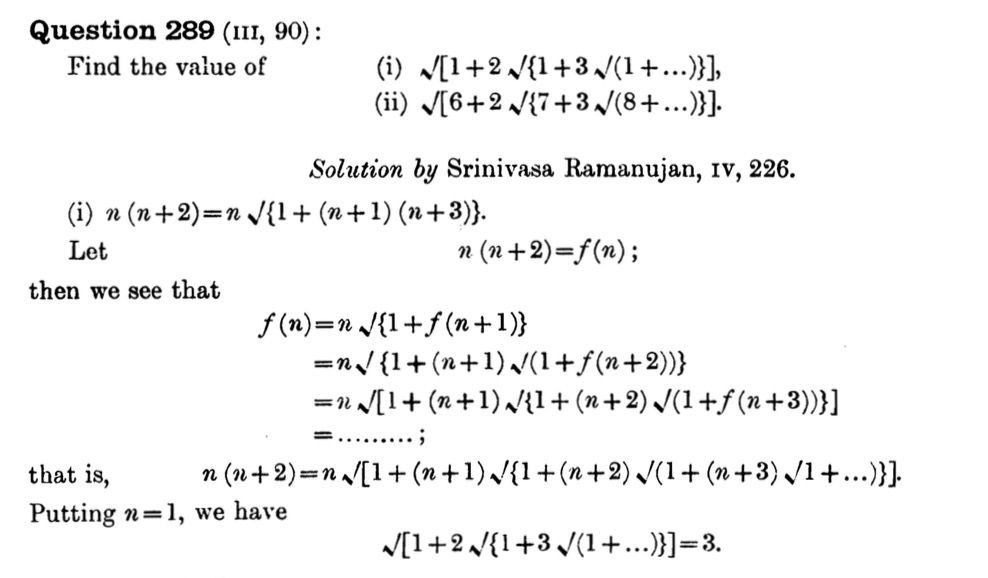I've seen many times the following problem posed by Ramanujan: $$\sqrt{1+2{\sqrt{1+3{\sqrt{1+\cdots}}}}} = \mbox{?}$$
This problem is also mentioned on Ramanujan's Wikipedia page along with the proposed solution. The solution looks fine unless you try to formalize the original problem itself. What does '$\cdots$' exactly mean in the statement of the problem? There should be some hidden limit...
I've read some discussion about it (and completely forgot the source) saying that the original statement is meaningless since it allows for many solutions. For example, $$4 = \sqrt{16} = \sqrt{1 + 15} = \sqrt{1 + 2\sqrt{\frac{225}{4}}} = \sqrt{1 + 2\sqrt{1 + 3\sqrt{\frac{48841}{144}}}} = \cdots = \sqrt{1+2{\sqrt{1+3{\sqrt{1+\cdots}}}}}.$$ Who was the first to realize that this problem is ill-posed? Was it published somewhere?

